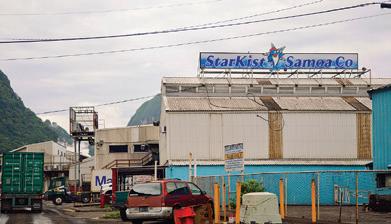
3 minute read
Fishing in Samoa: Traditional Fishing Methods
American Samoa
Despite not having any confirm
Advertisement
ed COVID-19 cases (and no way to test for it), American Samoa was quick to enact an emergency declaration in anticipation of potential impacts from the coronavirus in early March 2020. The American Samoa Government (ASG) used the declaration to implement a number of measures to prevent the virus from entering the territory and limit its spread in the event cases were confirmed. ASG established three levels of emergency for the declaration—blue, yellow and red. American Samoa has been under code blue status for nearly two months.
Under the current restrictions, ASG departments are forced to reduce employees’ hours to 20 per week. This has further limited the Department of Marine and Wildlife Resources’ capacity to collect catch data from fishermen at a time when data collection from our bottomfish fishermen is most needed. The recent bottomfish stock assessment has determined that this fishery is overfished and experiencing overfishing, when the problem appears to be the lack of complete and accurate data.
Due to the emergency declaration, businesses are allowed to open for
customers only from 6 a.m. to 6 p.m., with the exception of takeout food establishments. Restaurants, bars and nightclubs, which make up a good percentage of the seafood vendor market, can serve only 10 or fewer customStarKist Samoa has felt the impact of COVID-19, experiencing issues with absenteeism and delays in airfreight to American Samoa. ers at a time. As a result, some of these businesses increased the cost of airfreight for have shut down entirely, unable to the cannery and its canning plant. cover payroll, rent, utilities and othShipping has also been delayed due er fixed costs. This has had a direct to the suspension of all but a single impact on the fishermen who supply cargo flight per week. those businesses on a regular basis. While the US-flagged vessels that In the event of a confirmed case of supply fish to the cannery under the coronavirus, the operating hours Western and Central Pacific Fisheries would decrease to 6 a.m. to 3 p.m., Commission were granted an exempand, should a code red go into effect tion from the federal fishery obser(denoting a widespread infection), ver coverage requirement, there are businesses would be forced to close questions about what will happen at noon each day. when that waiver expires at the StarKist Samoa was granted a waiver end of May. There is also the issue by the governor of American Samoa of demand now that so many food to operate under normal hours production companies have had their during the emergency declaration. operations affected by the COVID-19 However, the company has still felt pandemic. Companies like StarKist some major impacts due to the Samoa are vital for the American coronavirus. Employee attendance Samoa economy. Many countries are has been unstable since the declaraimplementing social distancing and tion, with absenteeism at a very high stay-at-home protocols, and with rate. The governor asked Hawaiian non-perishable foods at a premium, Airlines to suspend flights until StarKist plays a very important part at least June 1, 2020, which has in the US food supply chain.
FEDERAL FISHERY OBSERVERS
In March, the US-flagged fishing fleet based in American Samoa was under increasing strain as pandemicrelated restrictions imposed across the Pacific complicated putting fishing observers on boats and returning them to their homes once their trips were finished. Members of international fishery organizations asked for a temporary relaxation of observer coverage requirements on purse seine, longline and transshipment vessels. On March 27, 2020, the National Marine Fisheries Service enacted an emergency rule that granted the authority to waive specific observer requirements under certain circumstances. Many island nations are hesitant to have foreign crews and observers interacting, much less being present in areas not widely exposed to the pandemic. To date, observer requirements have been suspended on US-flagged purse seine vessels through May 31, 2020, and observers have not been placed on Hawai‘i-based longline vessels since the emergency rule took place. American Samoa remains the last US state or territory to not have COVID-19 and is a strategic port for US fisheries operating in the South Pacific.







